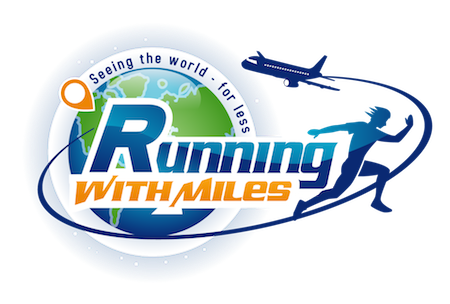We know we can use frequent flyer miles to redeem airline tickets. What can be confusing sometimes is which program to participate in. Choosing a program simply to redeem miles on is not that big of a choice. It takes more thought if you plan on doing a lot of flying and you are trying to determine which program to give your loyalty to (this will be discussed further in a future installment).
The first thing you need to do is figure out what your short term race goals are and what your long term goals are. For instance, I may want to run Fargo Marathon (in May) as my short term domestic goal and run Amsterdam Marathon (in October) as my long term goal. For this example, I would choose to do Fargo in 2012 and Amsterdam in 2013 (or 2014, depending on whether I wanted to bring family members with me). If your only goal is to do one exotic foreign marathon, then I would suggest putting it out at least two years so that you can accumulate enough points and miles to make it the most memorable of experiences.
The second thing is to determine which airline has the best service to the city you chose for your race. In the Fargo instance, United and Delta both fly to Fargo, but I would need to take 3 flights to get from my home to Fargo on Delta. With United, I would have only 2 flights (connecting through Chicago, which makes for the shortest of flights to arrive there). So, in this case, I chose to fly with United. It is always better to choose an airline that has more flights into your destination airport to ensure greater availability (more on that in a minute).
The third thing is determining how many miles you need to redeem to get to your destination. If it is a domestic trip, 25,000 is pretty much the standard for redeeming at the low level (with the exception of promotions that are run from time to time like American Airlines/Citibank promotion that is running here. On the new airlines (like Southwest and Jetblue), their redemption system runs on a fixed value system where the number of points needed for redemption is directly related to the cost of the ticket. So, make sure you take that into account if you are considering one of those airlines.
If you are going international, again, the necessary miles will be pretty similar among the various airlines. The exception here will be with airlines that use a zone-based distance system (like British Airways new Avios program). Even though most airlines are similar in their redemption offerings, you need to determine if there is availability for the dates that you are looking at. The airlines always boast a “No Blackout Dates” for their reward redemptions. That is true – there are no blackouts. What you have instead is an availability scale. For example, with Delta there are three levels of availability – Low, Medium, and High. So, if you were going to depart from the US using Delta’s Skymiles program as your redemption method and going to Europe, your ticket could cost as little as 60,000 miles r/t or as high as 125,000 r/t (for economy). It pays to know if there is low availability for the dates you are looking to travel on!
Another interesting aspect of booking award tickets for international destinations is how partner airlines can figure into your itinerary. This can open up a lot more availability and some fabulous layover/stopover options. At the same time, you will need to research to see what the taxes are with the partners. Typically, international partner airlines charge a lot more for award ticket taxes than domestic airlines. So, be on the lookout – you do not want to go to Amsterdam using 60,000 miles only to pay $700 in taxes and fees!
The fourth part of picking a frequent flyer program is knowing the various rules in relation to close-in bookings (typically bookings made within 21 days of departure), change fees, cancellation (or redeposit) fees, luggage allowances, and the cost of seat selection. If you just sign up for a particular credit card because it seems like it offers more points and you do not check into these things beforehand, you may wind up using miles on a ticket (to save money, of course) and find that you are still required to pay upwards of $200 depending on what your travel circumstances are.
Does this all sound confusing yet? 🙂 This may be more thought than you will actually need to put into your planning, but I want you to know as much as you can ahead of time to ensure a pleasant and memorable trip. If you like me and you are flying in for a race the night before and leaving immediately after to fly home, then some of these things may not seem that important. However, if you are wanting to plan an international trip of a lifetime and center it around a race, it would do you well to be as well prepared as possible.
So, after all that, is there a particular race or destination you have in mind? Leave it in the comments and I will try to help you with figuring some of this all out for your particular situation. Stay tuned! There will be more instruction installments, but the great credit card offers that allow you to fly for free will be talked about soon!







